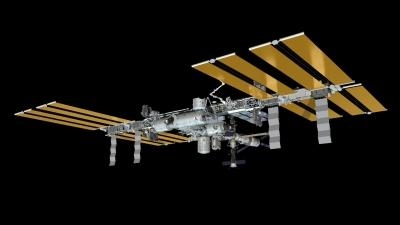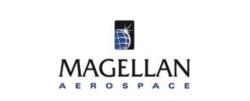SSEP Gives Students Ability To Design And Fly Experiments In Low-Earth Orbit
Magellan Aerospace has entered into an international partnership agreement with the Student Spaceflight Experiment Program (SSEP). The SSEP is a US-based, immersive program that was launched in June 2010 by the National Center for Earth and Space Science Education (NCESSE) that gives typically 300+ students across participating communities the ability to design and propose real microgravity experiments to fly in low Earth orbit on the International Space Station (ISS). The program was created to promote Science, Technology, Engineering, and Mathematics (STEM) learning, and Magellan is very pleased to be able to contribute in this meaningful way to bringing the SSEP experience to Canadian youth.

In 2012, SSEP was extended to international communities through the Arthur C. Clarke Institute for Space Education, NCESSE's new international arm. This unique program engages students and teachers in every facet of real science and aims to change the way students perceive science and their ability to do it.
As an international partner, Magellan increases the opportunity for more communities to participate in SSEP. The program utilizes the funding provided by the company to bridge funding shortfalls for communities that may otherwise be unable to participate. Magellan sees this funding as an investment in the youth of Canada, and in nurturing an interest in science to the next generation of scientists and engineers.
When the SSEP was broadened to include Canadian participation in 2012, two school districts (or communities of schools) were able to participate in this unique program and send scientific experiments into space – Stonewall, Manitoba on Mission 3 to the ISS in 2013, and Kamloops/Thompson School District 73, British Columbia on Mission 6 to ISS in 2014. In order to participate in the program the communities were required to fund-raise in order to cover some of the costs of the space launch. Magellan participated on the funding teams for both of these Canadian student missions, and has experienced first-hand the excitement that this once-in-a-lifetime learning opportunity delivers to students.
On the success of the first two Canadian programs, the SSEP has taken root, and gaining more and more visibility and interest throughout the country. Earlier this year, three more Canadian communities were selected for participation in the program and the next opportunity to see their science fly to space on SSEP Mission 8. The communities are:
- Bishop Carroll High School in Calgary, Alberta;
- Ryerson University and Local High Schools in the Toronto District School Board (TDSB); and
- University of Toronto Schools (UTS).

Magellan's partnership funding was required for two of these three communities to go forward with participating in the program.
The two, current (Mission 8) Magellan-sponsored, student groups are on the countdown to launch right now and Dr. Jeff Goldstein, the Center Director, NCESSE reports that there has been an "overwhelming response from educators for participation in Mission 9 to ISS, beginning in September 2015." Support provided by Magellan will, again, be crucial for enabling a greater number of students access to the SSEP program as part of Mission 9.
 ANN's Daily Aero-Term (04.28.24): Airport Marking Aids
ANN's Daily Aero-Term (04.28.24): Airport Marking Aids Aero-News: Quote of the Day (04.28.24)
Aero-News: Quote of the Day (04.28.24) ANN's Daily Aero-Linx (04.28.24)
ANN's Daily Aero-Linx (04.28.24) Aero-News: Quote of the Day (04.29.24)
Aero-News: Quote of the Day (04.29.24) ANN's Daily Aero-Linx (04.29.24)
ANN's Daily Aero-Linx (04.29.24)




